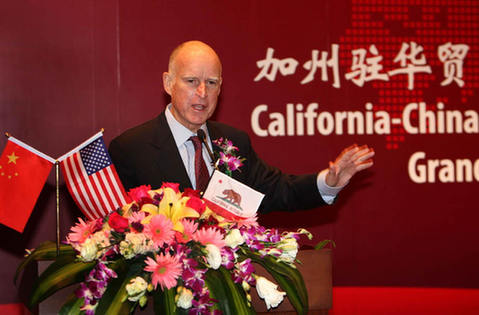Promoting China-U.S. Economic Relations through the Bilateral Investment Treaty
The bilateral investment treaty will be also significant for China. It is expected to boost investment in the U.S. and ensure impartial settlement of disputes, thus avoiding unfair treatment of China’s investors from the Committee on Foreign Investment in the United States (CFIUS).
Negotiations on the bilateral investment treaty go through two stages: The first is mainly about documentation, and the second focuses on the negative list. As of July 2014, the two sides had conducted 13 rounds of negotiations. In July 2014, they entered the phase of negative list negotiations.
After the two countries declared a restart of negotiations, U.S. Treasury Secretary Jacob Lew commended the move as a huge breakthrough. The bilateral investment treaty is believed to boost U.S. firms’ investment in China.
On April 12, 2013, the California-China Office of Trade and Investment reopens in Shanghai.

Win-win Aim
In principle, several motives drive the U.S. to sign BITs with foreign countries. First, to protect the U.S.’ investment in other countries; second, to adopt a more market-oriented policy towards foreign direct investment in the U.S. in an open, transparent and non-discriminating way; and third, to support the development and implementation of related international laws and practices compatible with the above motivations.
As far as the China-U.S. BIT is concerned, the U.S. stands to reap the following gains. First, the bilateral agreement, covering all investment phases and related industries, will smooth the way for U.S. firms to enter the Chinese market. The core of bilateral negotiations will focus on the negative list. Apart from industries ranked on the list, all other industries will be accessible to U.S. companies. Therefore, the U.S. takes the BIT as an important means to expand American firms’ footholds in the Chinese market.
Second, the U.S. expects the treaty to grant its companies national and non-discriminatory treatment. A survey by the U.S.-China Business Association shows that challenges facing U.S. companies in China cover administrative examination and approval, competition with Chinese firms, unfair law enforcement, as well as investment-related restrictions, standards and appraisal procedures. Therefore, the BIT is expected to afford more national treatment for U.S. firms.
Third, the treaty will prompt China to improve labor and environmental standards. As per the 2012 BIT model of the U.S., the recipient countries for investment are required to meet high-level labor, environmental and administration standards. Fourth, via the treaty the U.S. will require China to relax or remove restrictions on the proportion of ownership for U.S. investors, thus changing the rules for U.S. firms operating in China. For example, China’s current regulation stipulates that foreign ownership in its auto industry should be less than 50 percent, which is also true for the life insurance field. Therefore, the BIT will help U.S. firms to expand their business in China.
Before 2000, the investment flow between China and the U.S. had been lopsided, mainly in a one-direction flow. U.S. transnational corporations invested in China’s labor-intensive manufacturing or processing industry, while Chinese enterprises were either unable or lacked motivation to invest in the U.S. China sought to preserve or increase the value of its official foreign exchange reserve mainly through purchasing U.S. government bonds or other bonds.

